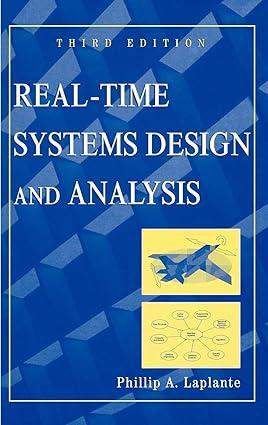Consider the following tasks with their resource requirements given as: a) 1 = (10, 4, 1; [A;
Question:
Consider the following tasks with their resource requirements given as:
a) τ1 = (10, 4, 1; [A; 1]), where the task executes for two time units, then requests the resource A.
(b) τ2 = (7, 4, 2; [A; 1][B; 1]), where the task executes for one time unit, then requests the resource A and then B.
(c) τ3 = (4, 4, 3; [B; 1][C; 1]), where the task executes for one time unit, then requests the resource B and then C.
(d) τ4 = (0, 11, 4; [A; 5[B; 2]][C; 1]), where the task executes for two time units, then requests the resource A and holds it for one time unit and makes a nested request for resource B, and then requests C.
Here, the notation τ1 = (ri, ei , [R, t ]) represents that the task i is released at time ri , has execution time ei , priority πi , and the critical section [R; t ] for the resource R and the execution time t . Also note that the representation [R; t [S;w]] denotes the nested critical sections, that is, that the usage of resource R in turn includes the usage of resource S, and time t includes the time w of the critical section S.
Construct the schedule for the system using (a) the Priority Inheritance Protocol, (b) the Priority Ceiling Protocol.
Step by Step Answer:






